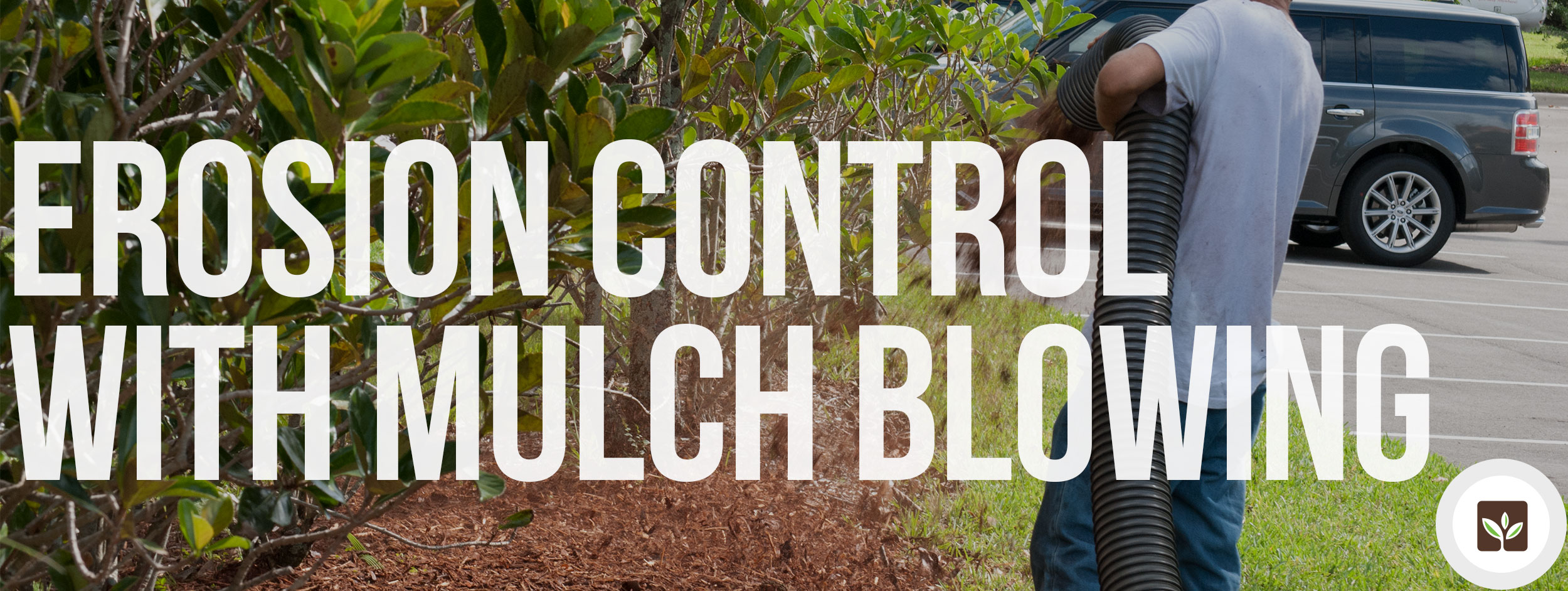
Erosion Control with Mulch Blowing
Soil erosion can be a serious concern that leads to not only soil loss but increased water runoff and nutrient deficiencies. Erosion can ruin a landscape, wash away seeds, impact agriculture, and even pose a risk along highways and roads. Mulch installation is one of the most cost-effective solutions to combat erosion in many applications like:
- Residential and commercial landscaping
- Steep hills
- Parks and government-owned property
- Construction sites
- Agricultural land
When used as erosion control, mulch can help create a buffer to absorb rainfall, reduce water and wind erosion, and even introduce nutrients to the soil as it decomposes to improve the soil structure. Professional mulching can be a smart investment to help seeds germinate without being washed away, prevent landscape and lawn damage, and more.
Understanding Soil Erosion
Erosion refers to the slow loss of topsoil due to wind, rain, and rain runoff. Erosion is a concern in many environments, including sloped yards, agricultural land, construction sites, and hilly areas. Without adequate erosion control, topsoil can be washed away, leaving channels in slopes with piled up rock and soil at the base of the slope. This can undermine the flat land over the slope, block streams, wash away seeds, and deprive plants of nutrients.
Some types of soil are more prone to erosion than others. While sandy soil is more susceptible to erosion than the heavy clay soil found in much of Colorado, even clay soil can erode if the topsoil layer on a slope is thin or it sits on hard rock. Erosion can also be a bigger problem with clay soil because light and small particles are packed tightly to create clay but these particles are easily released when exposed to water. Other types of soil will flow for a short period of time and settle but clay will continue to flow with the water and create a muddy disaster.
How Mulching Stops Erosion
Mulch is an effective way to control erosion while also adding rich organic matter to the soil. Mulch can be as effective as adding ground cover with the added benefit of immediate protection without waiting for seeds to germinate and roots to spread and become established.
Mulch controls soil erosion in several ways:
- Mulch absorbs excess rain to reduce the amount of runoff
- Mulch helps soil retain moisture. Slightly moist soil can absorb rain better than dry, parched soil, which is more likely to lead to runoff.
- Mulch provides a buffer against wind erosion.
- Mulch helps support stronger, healthier root growth. Healthy plants are also excellent at stopping erosion as the roots anchor the soil and soak up water.
- Mulch reduces soil compaction from heavy rain. Compacted soil cannot absorb water as readily as looser soil. This is especially true with clay soil.
To provide effective erosion control, the mulch needs to completely cover exposed topsoil with a depth of 1-2″ on flat ground or at least 4″ on steep slopes.
Why Choose Blown-in Mulch?
Controlling erosion on your property can be as easy as scheduling an appointment for blown-in mulch without the hassle and effort involved to spread mulch by hand. Blown-in mulch is delivered with a powered truck, two technicians, and a long, flexible blower hose that delivers mulch exactly where it’s needed. Blown-in mulch delivers flawless, smooth results with the right application depth in a fraction of the time it would take a full crew to complete the job.
Blown-in bulk mulch application is also well-suited to installing mulch over large areas for erosion control. Thanks to the flexible hose used to blow mulch in place, technicians can easily spread mulch anywhere, even areas that are hard to reach like steep hills and around fencing.
Categories: Colorado Mulch Installation, Mulch Blowing | Tags: Blown-In Mulch, Colorado Mulch Installation, Mulch Blowing